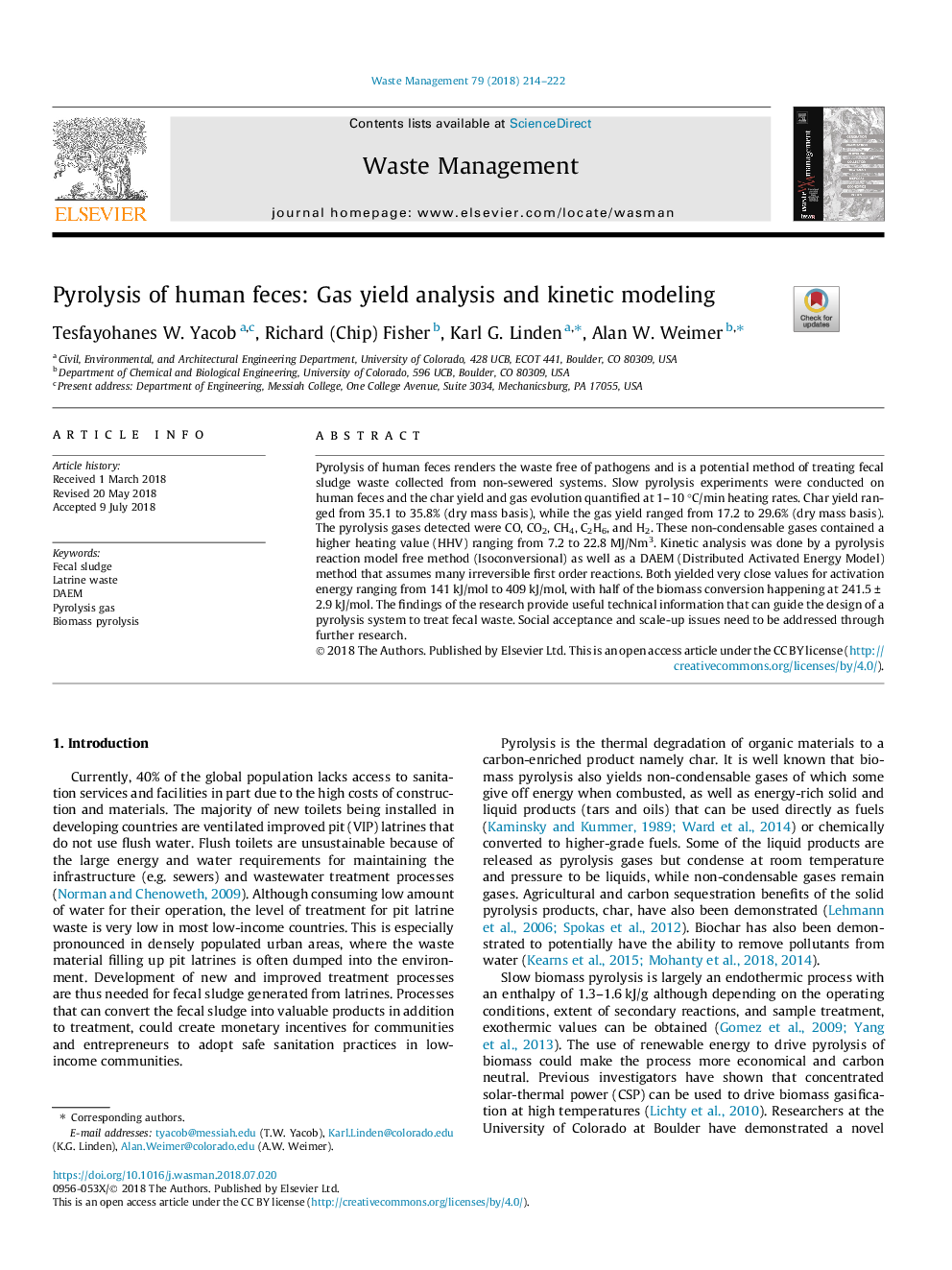| Article ID | Journal | Published Year | Pages | File Type |
|---|---|---|---|---|
| 11033310 | Waste Management | 2018 | 9 Pages |
Abstract
Pyrolysis of human feces renders the waste free of pathogens and is a potential method of treating fecal sludge waste collected from non-sewered systems. Slow pyrolysis experiments were conducted on human feces and the char yield and gas evolution quantified at 1-10â¯Â°C/min heating rates. Char yield ranged from 35.1 to 35.8% (dry mass basis), while the gas yield ranged from 17.2 to 29.6% (dry mass basis). The pyrolysis gases detected were CO, CO2, CH4, C2H6, and H2. These non-condensable gases contained a higher heating value (HHV) ranging from 7.2 to 22.8â¯MJ/Nm3. Kinetic analysis was done by a pyrolysis reaction model free method (Isoconversional) as well as a DAEM (Distributed Activated Energy Model) method that assumes many irreversible first order reactions. Both yielded very close values for activation energy ranging from 141â¯kJ/mol to 409â¯kJ/mol, with half of the biomass conversion happening at 241.5â¯Â±â¯2.9â¯kJ/mol. The findings of the research provide useful technical information that can guide the design of a pyrolysis system to treat fecal waste. Social acceptance and scale-up issues need to be addressed through further research.
Related Topics
Physical Sciences and Engineering
Earth and Planetary Sciences
Geotechnical Engineering and Engineering Geology
Authors
Tesfayohanes W. Yacob, Richard (Chip) Fisher, Karl G. Linden, Alan W. Weimer,
